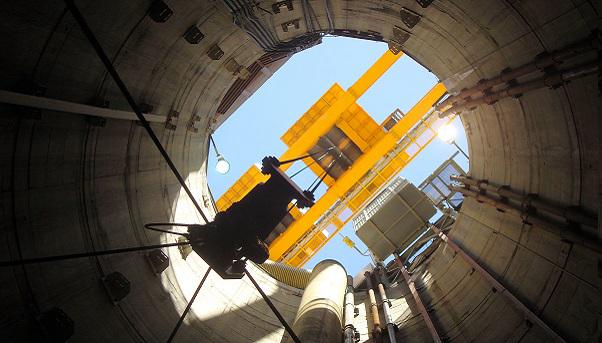
Las Vegas is an improbable – if not impossible – city. Improbable in the sense that it offers unexpected sites to tourists who indulge in gambling and other entertainment for which it is renown. Many of the sites along the main strip are replicas of famous buildings and monuments like the Eiffel Tower, an Egyptian pyramid or a Manhattan skyscraper. There is even a Venetian canal with gondoliers. Architectural audacity aside, the city itself is an improbable construct: a vibrant expanse of urban life in the middle of a desert. And the feats that it performs to maintain this act reach the same level of incredulity, especially when it concerns its own survival.
Faced with a drought that threatens its water supply, the water authority responsible for the city had a tunnel drilled under a nearby lake to make sure residents and tourists alike could drink, cook and wash for years to come.
It has been years that Las Vegas and the rest of the U.S. southwest have suffered from drought. The Colorado River, which brings water to the region and beyond, is flowing less forcefully. As a consequence, the water level of Lake Mead, the artificial lake that supplies nearly all of the city’s water, is falling.
Las Vegas has already adopted water conservation measures, such as incentives encouraging residents to replace their grassy lawns with rock and cacti to cut back on sprinkling. But these measures might not be enough, according to a June 2014 report by Fitch Ratings.
“While many desert cities are intimately familiar with drought and water supply issues and have planned accordingly, a permanent climate shift would dramatically alter long-term growth prospects,” it said.
The surge in the city’s population to nearly two million hasn’t helped, either. The drilling under Lake Mead was done by Salini Impregilo, which set a record in the world of engineering under the bed of one of the largest artificial lakes in the United States.
The Italian civic engineering group overcame serious geological challenges to drill a four-kilometre-long tunnel under Lake Mead to reach a pipe in the middle of the body of water.The pipe will become the main supplier of water for the residents of the “Entertainment Capital of the World” some 30 kilometres away.
The risks of the project were high. The theoretical water pressure above the heads of the workers steering the boring machine through the rock was up to 15 bars rather the usual one to three bars. “It was the only mining job in the world that was done under such pressure,” said Jim Nickerson, the project manager. “This (was) the most technically challenging job.”

In December 2014, the boring machine completed the final meters of its journey by breaking through the concrete wall of the intake structure that had been placed after an excavation at the bottom of the lake, more than 100 metres below the surface of the lake.
“(It’s) a new milestone (for) Salini Impregilo,” Chief Executive Pietro Salini had exclaimed in a statement announcing the news.
Begun in 2008, the project, which has come to cost more than 300 million euros, is near completion as workers from Vegas Tunnel Constructors – the joint- venture responsible for the project between Salini Impregilo and its U.S. subsidiary, S.A. Healy – have begun to flood the tunnel with water.
By the end of September, they are to remove a number of bulkheads including the one at the bottom of Lake Mead in order to put the new intake into service.
The project comprises a shaft on the shore of the lake that goes down 200 metres to the mouth of the tunnel. Water drawn from the intake’s opening in the middle of the lake will flow through a series of tunnels and shafts before getting pumped to a treatment plant. It will then head for the city.
Dubbed the “third straw”, the pipe will be the primary supply of water to Las Vegas because the other two pipes that were built in the past are becoming too shallow and risk rising above the water level as a result of a long drought.
Lake Mead was created by the Hoover Dam blocking the course of the Colorado River. Drawing water from the bottom of the lake will save money because the water is cleaner than that taken closer to the surface. Its cleanliness means less time required to treat it at the plant.

